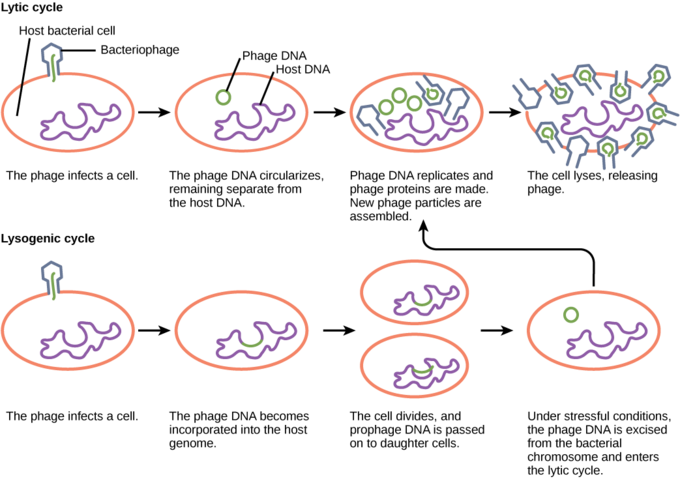A virus is a non-living infectious agent. It needs a host cell to replicate/reproduce. All viruses have genetic material, which they inject into the host cell, that is found in the capsid.

There are two forms of reproduction for a cell.
- Lytic Cycle: An active, quick infection that shows symptoms. The virus injects its DNA into the host cell, the cell replicates the DNA to make more viruses, and the viruses burst the cell to create more viruses.
- Lysogenic Cycle: A latent, slow infection that does not show symptoms. This virus injects its DNA into the host cell and the DNA merges with the cell’s DNA. It is in a resting phase, but the cell keeps replicating itself as normal. A disruption happens that can disturb the thousands of infected cells and they all erupt at once.

HIV: Human immunodeficiency virus infects the immune system cells called helper T cells. This causes the human infected to be unable to fight off the infections.